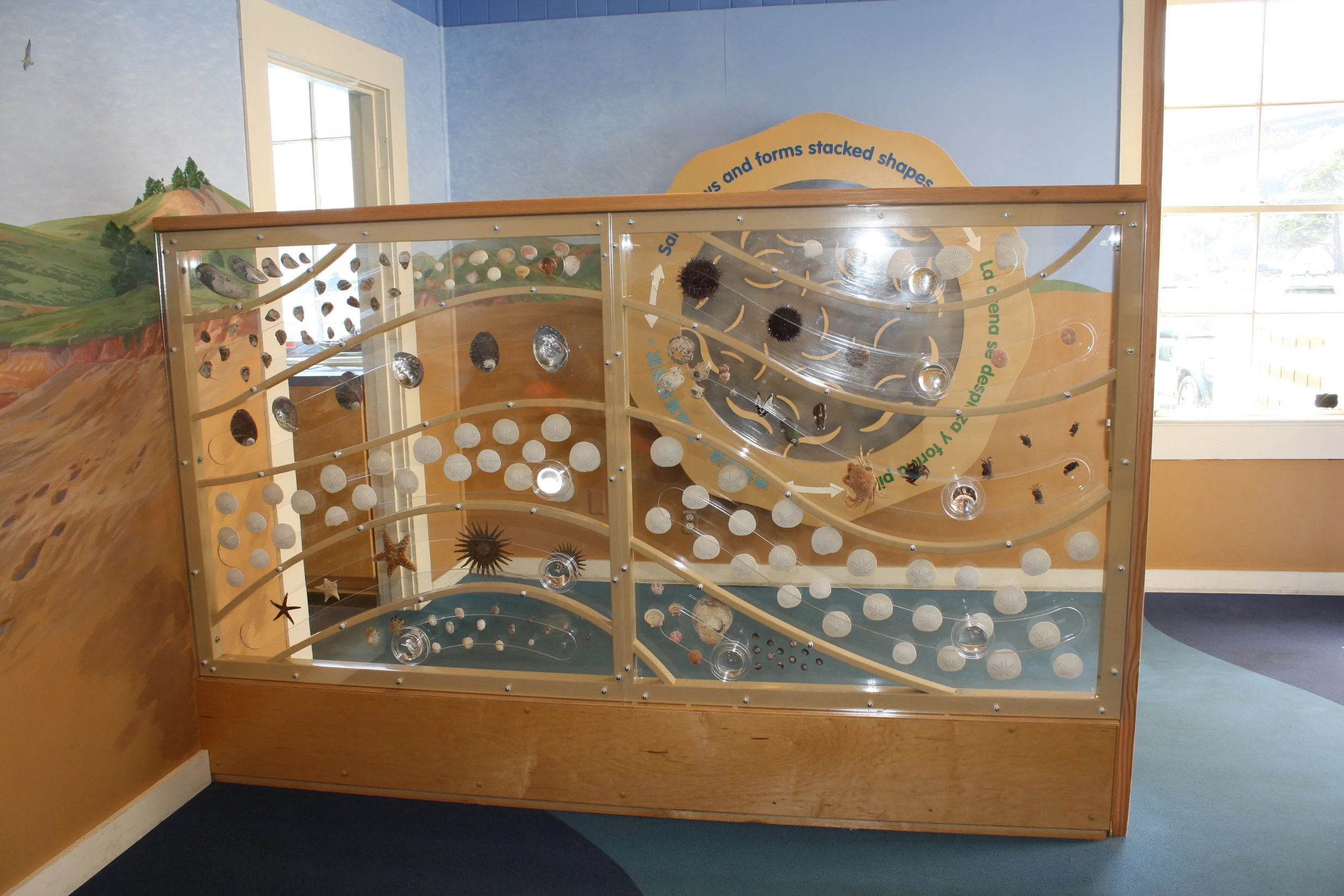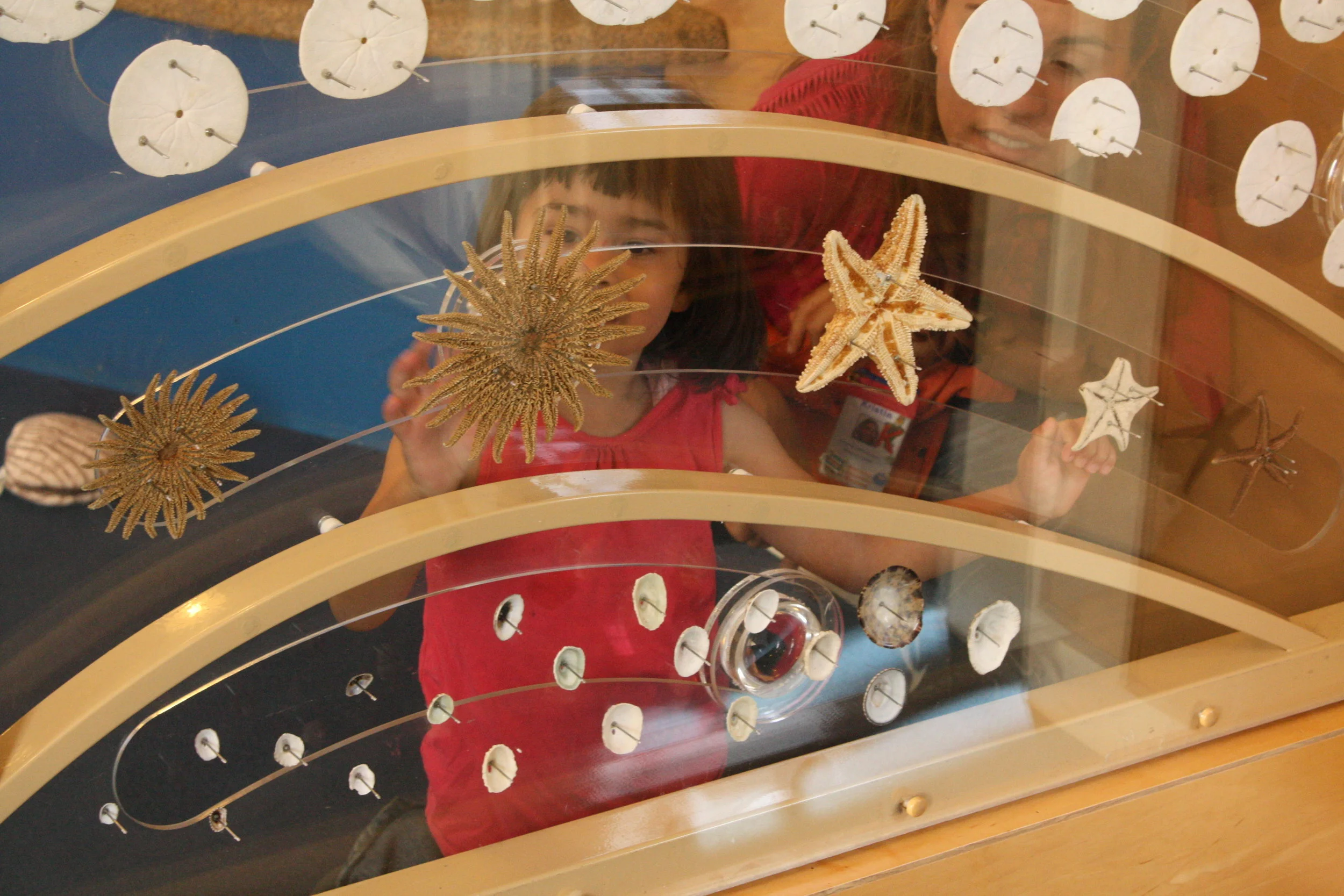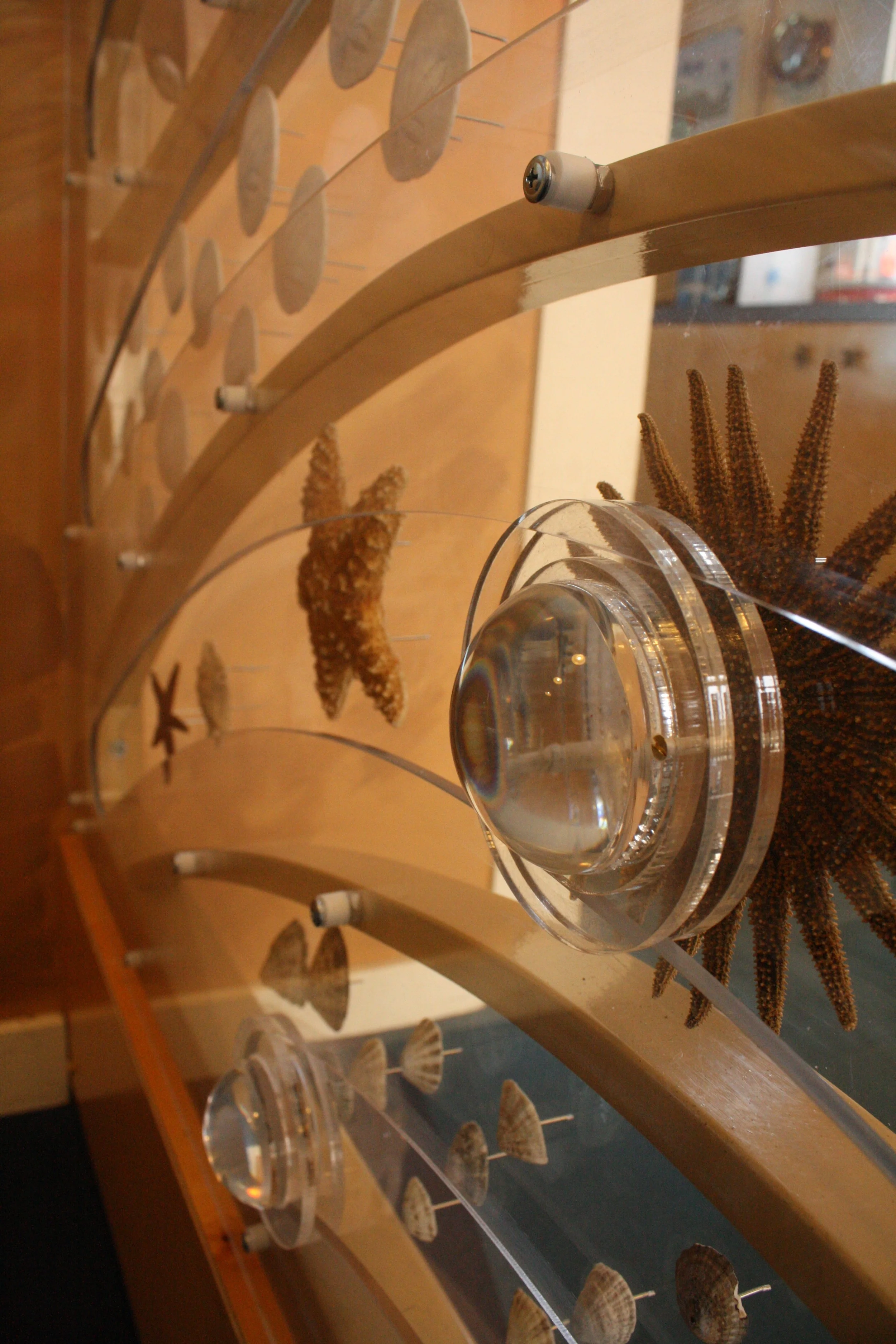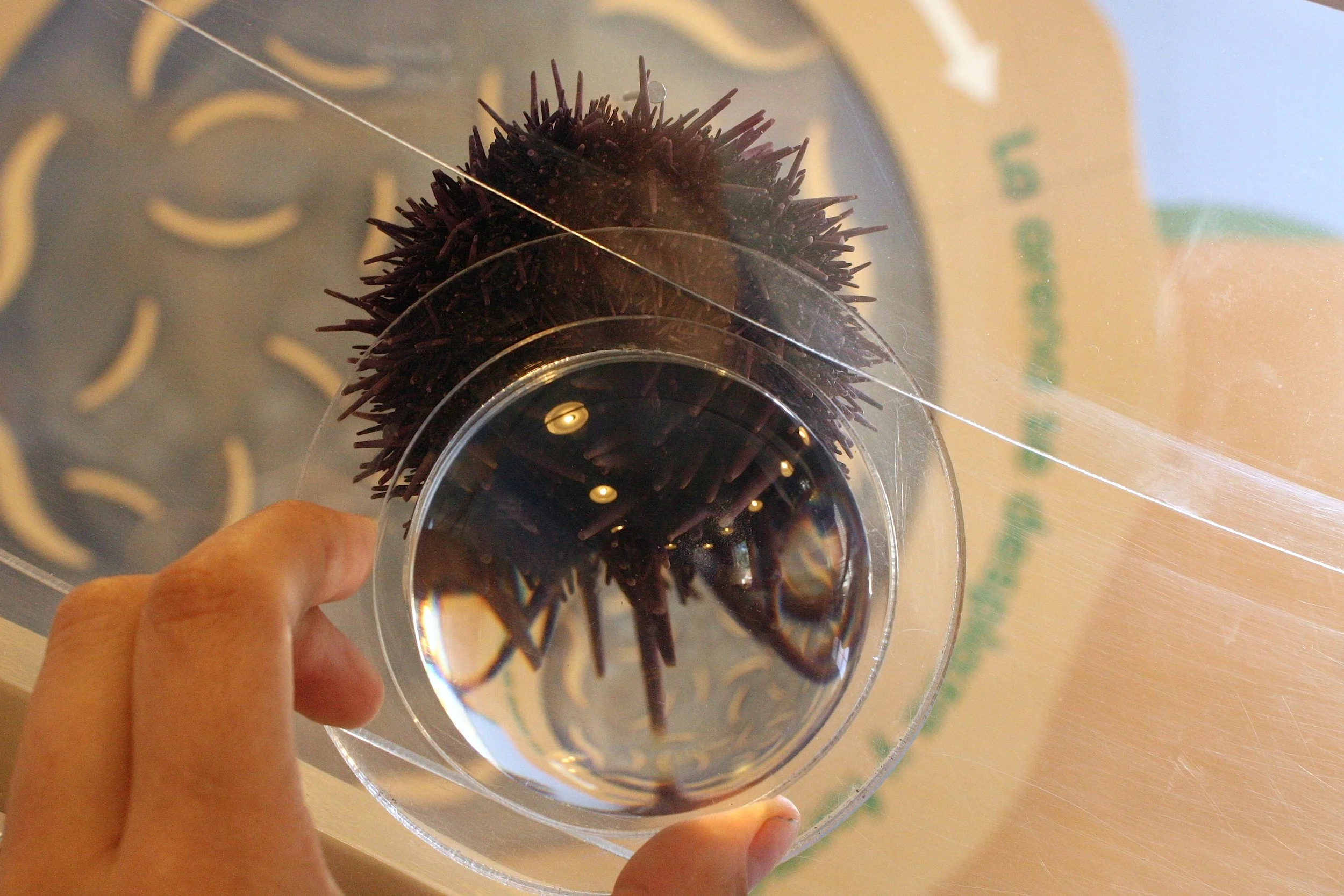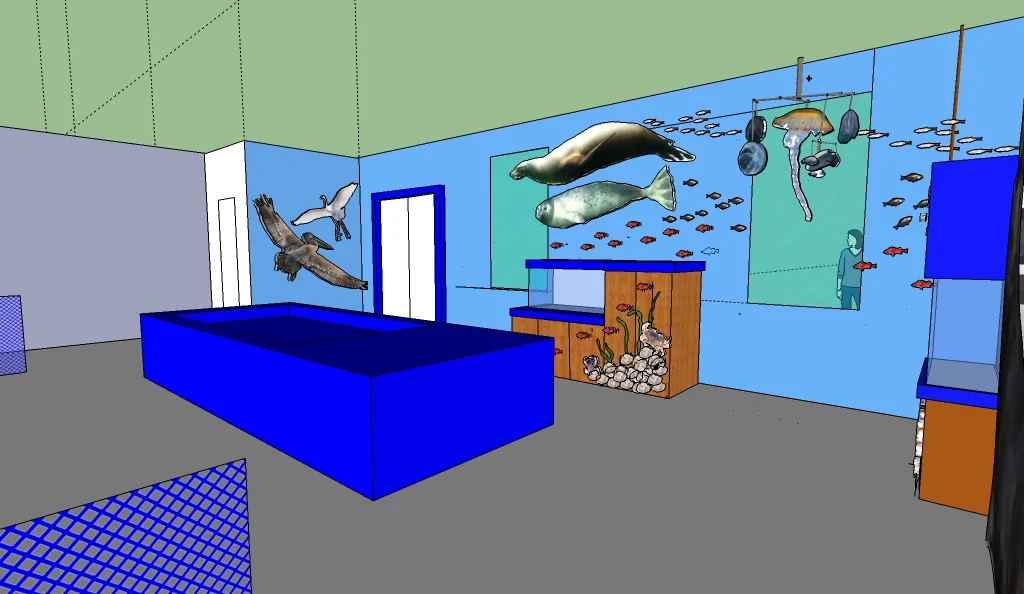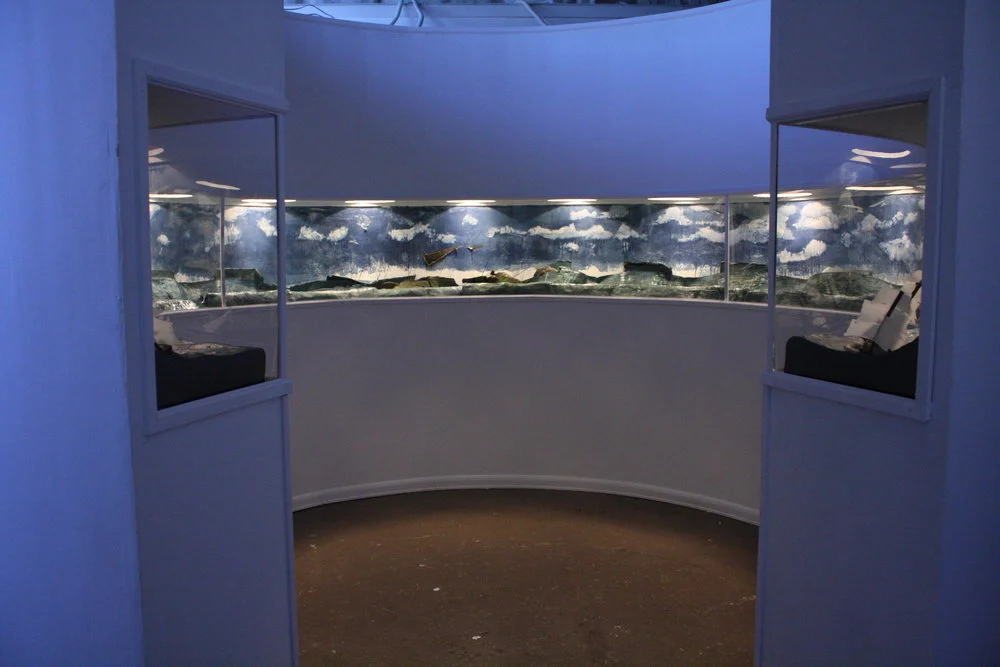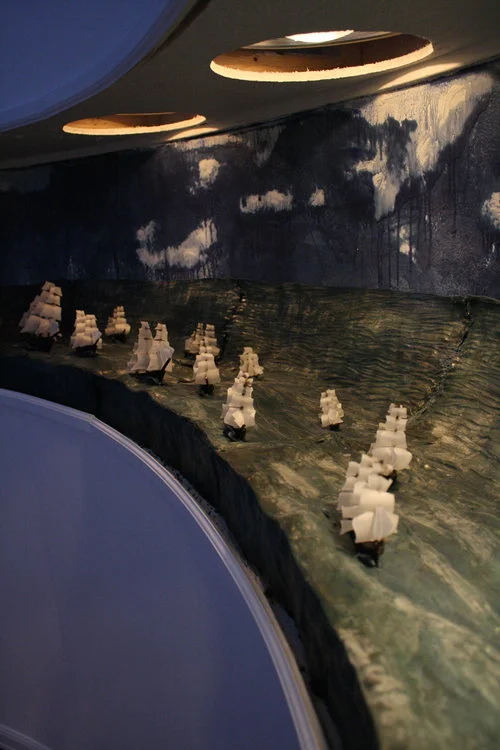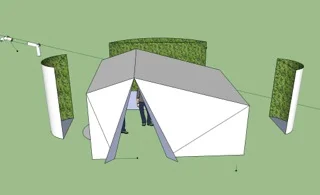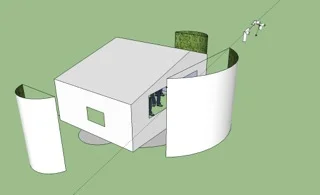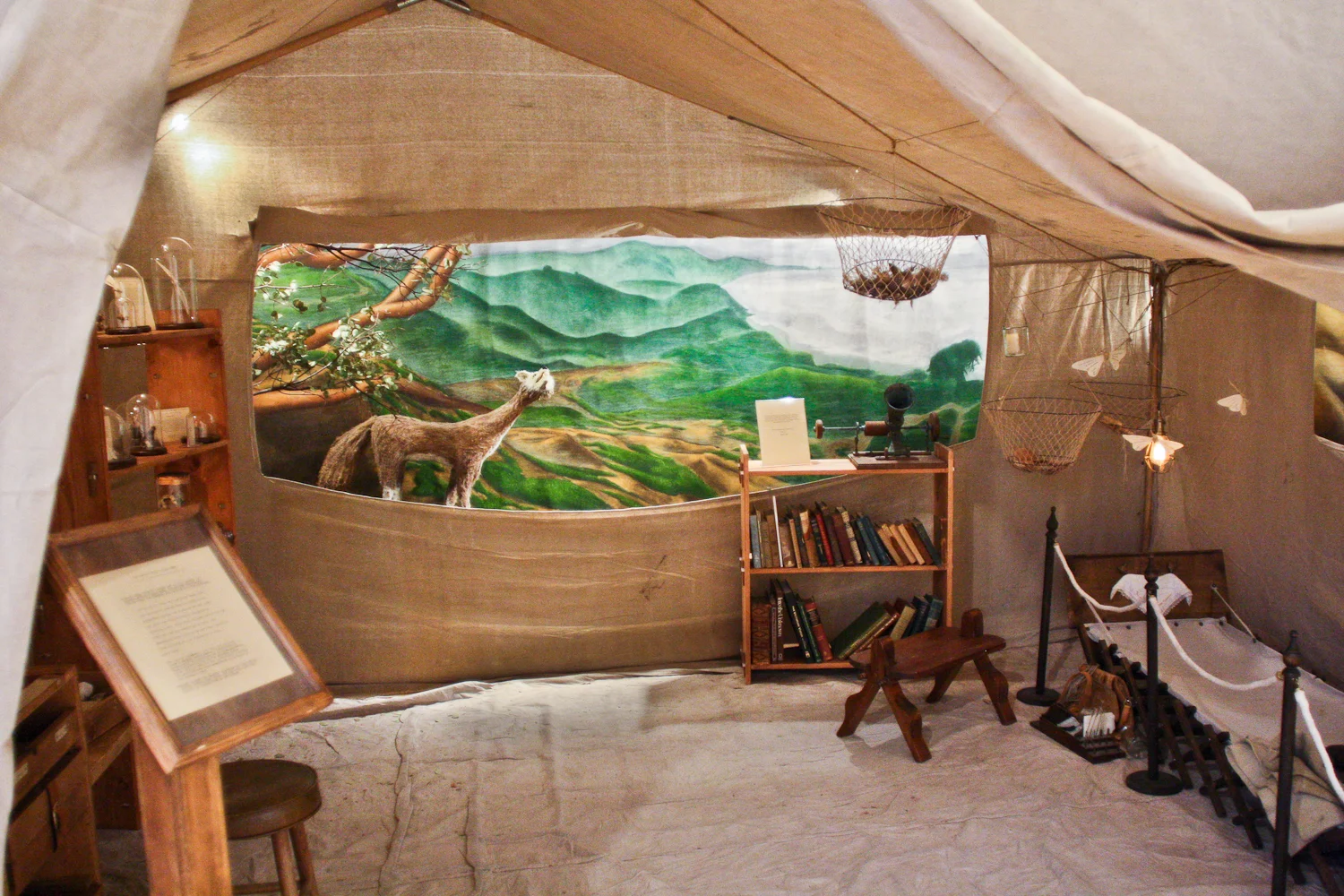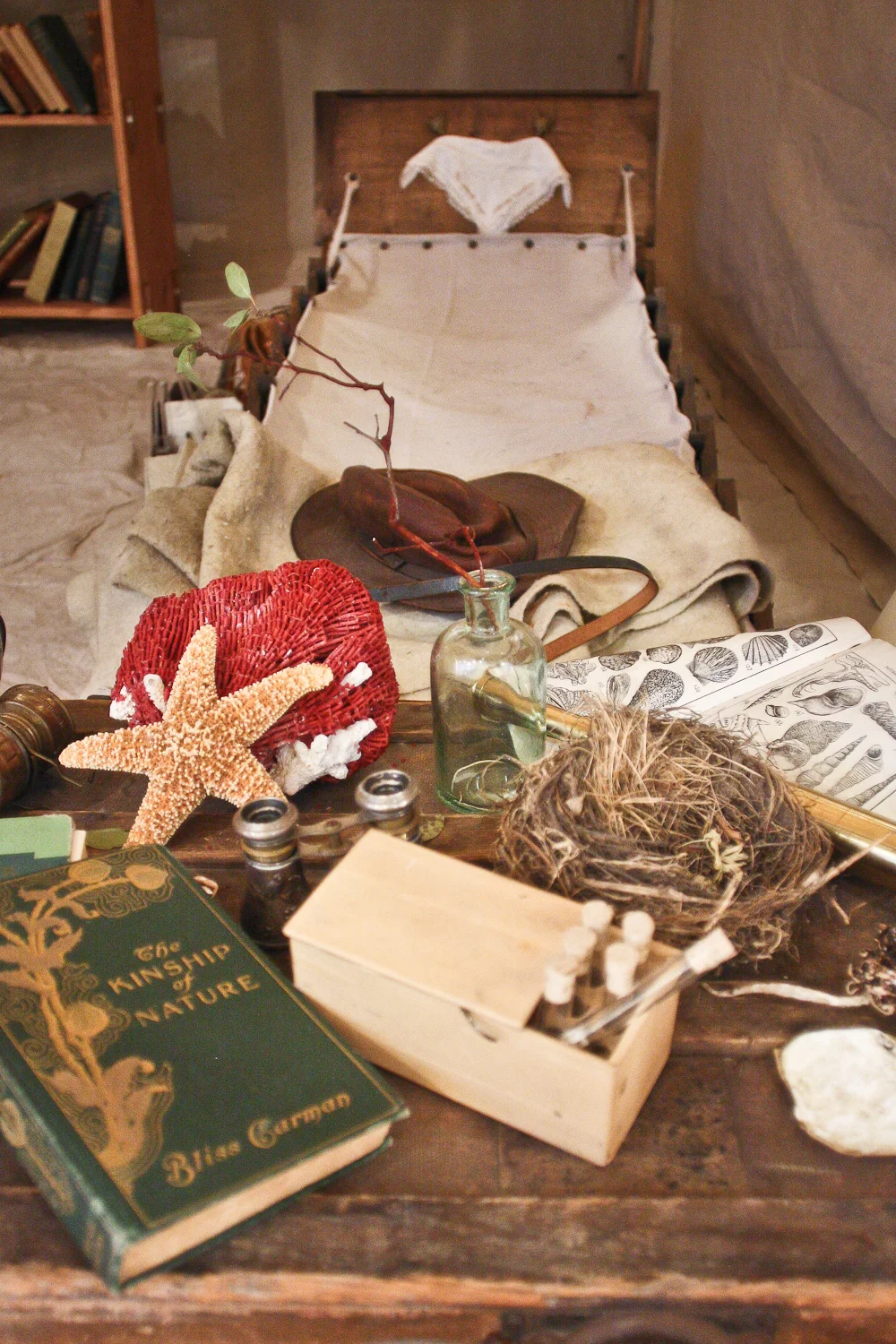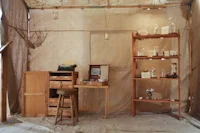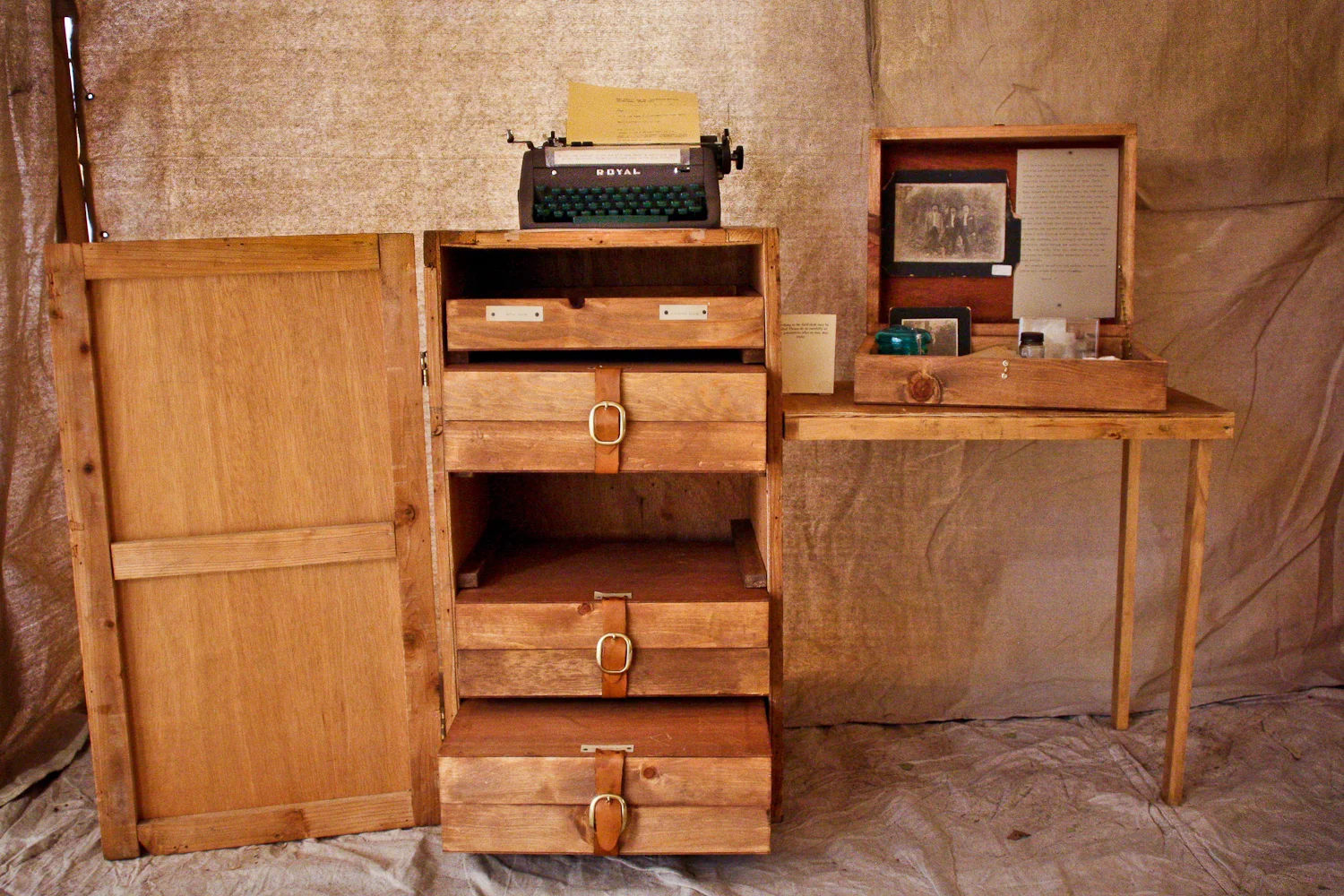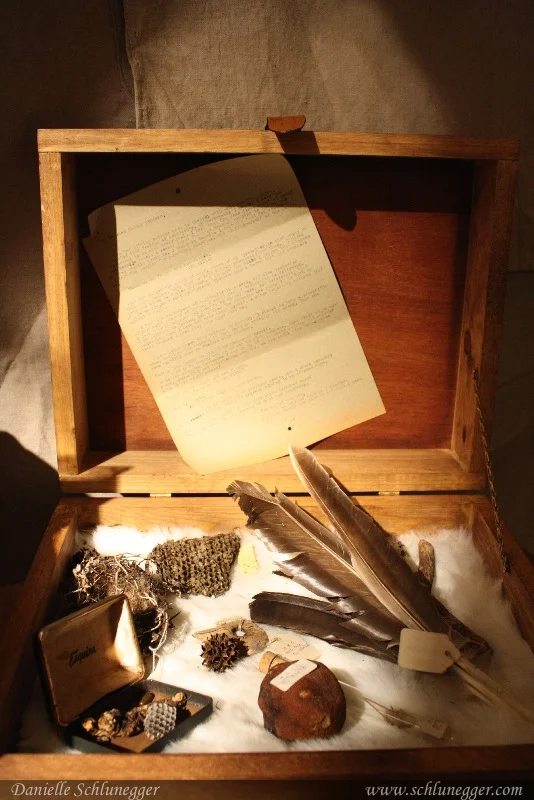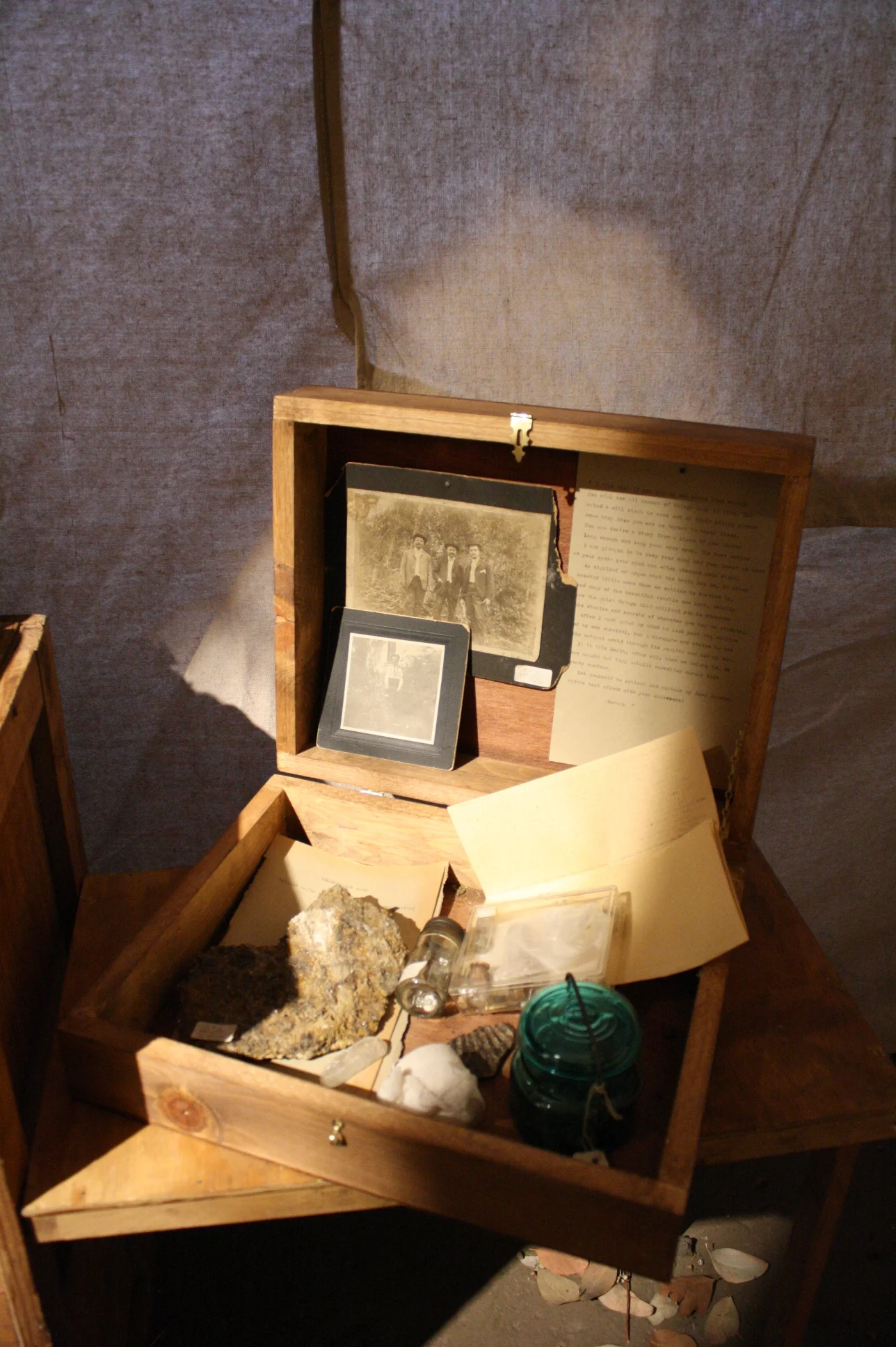Exhibit Design Portfolio
Bay Area Discovery Museum
Tidal Species - Cabinet of Curiosity
For a summer internship at BADM I designed this interactive Cabinet of Curiosity exhibit where the museum's 1-6 year old target audience could inspect local specimens up close. Acrylic magnifiers slide along a wave pattern of clear acrylic sheets that sandwich local tidal species. Younger visitors would be mostly engaged in the moving parts, while the 3-6 year old would be interested in the patterns and colors made visible from the magnification. The clear acrylic allows the dried specimens to be seen from both sides.
Sketch Up Models
Sketch Up Model of Sliding Magnifying Lenses
The Completed Tidal Species Exhibit
Bay Area Discovery Museum
Wave Workshop Rehaul
Inspired by Classical Natural History Exhibits
The addition of local animals in the Wave Workshop space celebrates the beauty of nature and exposes children to the biodiversity of the natural spaces close to their own homes. These additions also help to build on the pre-existing story of this room: that a teardrop shape is the most efficient for moving through water and air. I built the Wave Workshop in Sketch Up to define the placement of hand-painted sea lions and elephant seal cut outs, as well as molded and cast local rockfish species to later be mounted in the exhibit.
Sketch Up Models
Installed Cut Outs and Rockfish Casts
Frontier
A Panoramic Diorama
Shown at Basement Gallery May 2016
Frontier presents a vision of exploration and conquest during the Age of Imperialism in the Americas. The installation takes the form of an immersive panoramic diorama built out of beeswax and lit with heat lamps. Ephemeral by nature, this material will experience melting, casting, forming and finally melting again during the course of this exhibition. Frontier intends to both build and destroy historical notions of the past by creating museum quality dioramas and literally allowing them to melt away. In Frontier, my work searches for the elusive and misguided promise of truly untouched lands and considers this idea from the perspective of naturalists, who are themselves, Invaders.
Check out my interview with Oakland Art Enthusiast
---Full Project Here---
Sketch Up Models & Making Frontier
The Marcus Kelli Collection
The Marcus Kelli Collection is a fictional archive of natural history specimens and artifacts from the created life of the naturalist, Marcus Kelli that I have been developing since my Junior Year Review at California College of Art. The Collection displays specimens and Kelli’s personal effects in the format of an interactive museum, providing a tension between fact and fiction. I step into this imagined world as curator and head restoration artist of the Marcus Kelli Archive and Museum. Receptions become performances as I provide expert information on the collection to viewers. The Collection is inspired by 17th and 18th century cabinets of curiosity and the early explorers who saw things that no one in their cultural circle could have imagined. I aim to inspire curiosity and tug at the desire to study and discover the unknown.
Sketch Up Models
Sewing Pattern from Sketch up Model
The Completed Field Tent Exhibit
Interactive Field Desk
This fully interactive portion of the installation allows viewers to investigate artifacts, type their thoughts and comments down, and read the letters that Marcus Kelli wrote to his correspondents long ago.
Shifting Baselines
Proposed Project Model
Shifting Baselines will be a large-scale installation consisting of 8-10 white trees placed in a serpentine arrangement in the gallery. On each of the trees there will be 45-100+ peppered moth sculptures made out of paper,in5-10 different grayscale variants. The grayscale variant of each moth will be made by layering text selected from John Moallem’s Wild Ones, as well as scientific studies on the Peppered moth, which during the Industrial Revolution evolved to become almost black in color to camouflage on the coal encrusted trees.
The moths will be arranged on the trees from the lightest in gradient on the left to darkest on the right. This will represent the rate of human caused animal extinctions that are climbing ever higher at a greater rate. A few lightly colored moths on the last tree that is otherwise completely blackened, serves to highlight those “tiny counterweights” that do their best to push back against the onslaught of industrialization over nature, and as a symbol of hope for humanity be able to reverse it’s negative impacts on the environment



